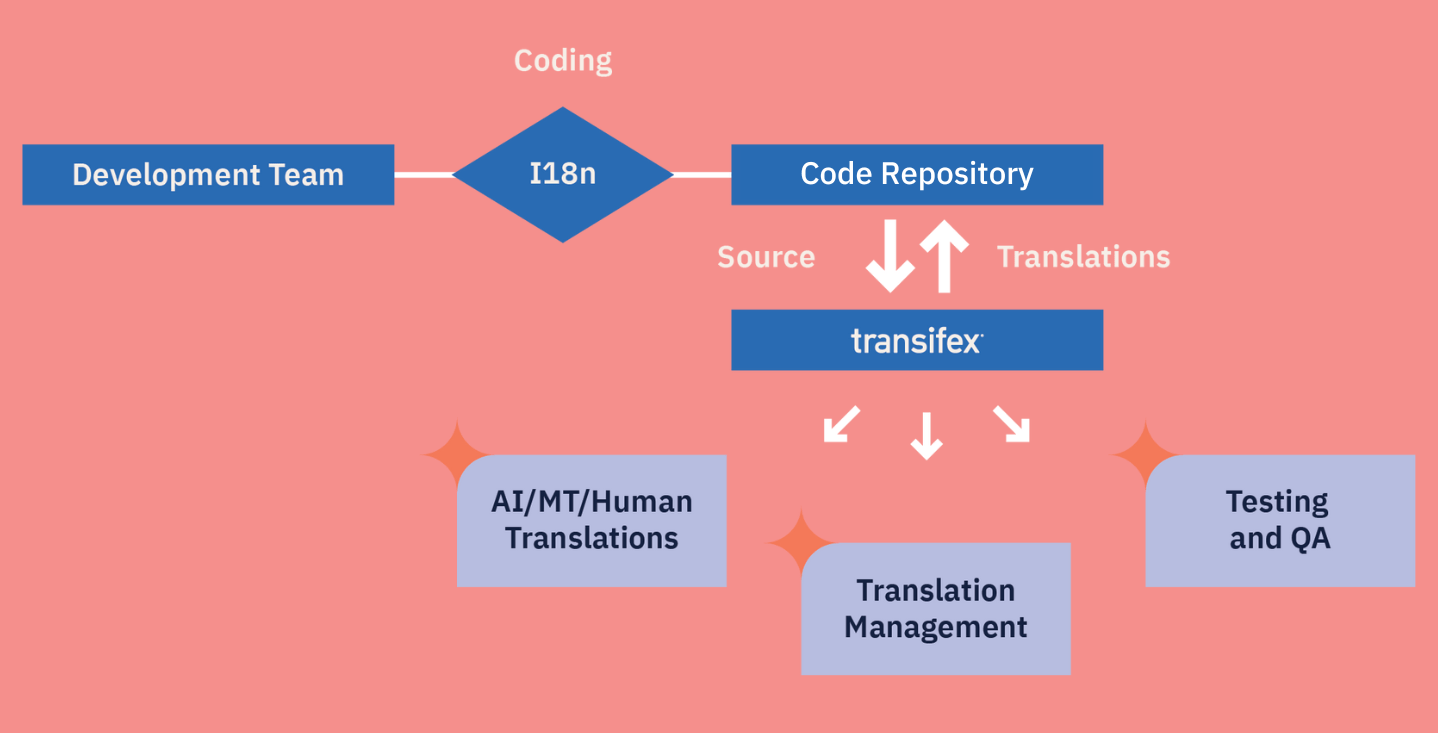Software localization benefits businesses seeking to connect with international audiences and expand their global footprint effectively.
In this article, we explore 10 powerful benefits of software localization and guide you on how to localize your product effectively, ensuring it engages your global audience.
What is Software Localization?
Let’s understand localization.
When a company enters a new market, it needs to modify its products so that they appeal to the local target audience. Software localization refers to when companies adapt all elements of their software and other related content so that it fits the linguistic, cultural, and regional preferences.
By adjusting minute details like date and time formats, currencies, number systems, images, symbols, and user interfaces, localization ensures that the software feels intuitive and natural for users in different regions.
10 Benefits of Software Localization for Business
Here are the major benefits of implementing software localization:
Expand Market Reach
It is a no brainer that a localized software will be more accessible and appealing to users who speak different languages and have different cultural backgrounds. Therefore, it allows businesses to reach audiences who may be previously untapped and establish a strong presence in new regions.
This expansion not only boosts organic user acquisition but also opens up new revenue streams.
Improves Customer Satisfaction
Localization does wonders for customer satisfaction. Study after study shows that users are more likely to engage with software that speaks their language and aligns with their cultural norms.
With localization, you are essentially making an effort to ensure that all your customers feel understood and valued. This reflects well on your business and leads to a more positive user experience.
When customers feel comfortable with a product, they are more likely to become repeat users, leave positive reviews, and recommend the product to others, which helps your business grow.
Increases Competitive Edge
Companies that adapt their products to local markets have a significant advantage over those that do not.
Localization helps businesses differentiate themselves from competitors who may only offer English-language interfaces or limited local support. It enables companies to position their products as more user-centric, making them the preferred choice among local consumers.
For example, a software company that offers localized versions for different markets can often outshine a competitor with a single version for all markets, gaining a larger market share.
Boosts User Engagement and Retention
The success of a software product is determined by user engagement. Localization helps create a sense of familiarity and comfort for users, encouraging them to engage more deeply with the software.
When users find that a product’s interface is tailored to their language, culture, and preferences, they are more likely to spend time exploring its features. This, in turn, leads to higher retention rates.
For instance, a gaming app that offers localized dialogues, instructions, and cultural references will likely see users spending more time playing and returning for future updates.
Enhances Brand Image and Trust
Localization signals a company’s commitment to inclusivity and respect for cultural diversity. When businesses take the time to adapt their products for different markets, it shows that they value their customers’ unique needs.
This can significantly enhance a company’s brand image and build trust among users. A brand that is seen as respectful of cultural differences is more likely to earn the loyalty of local customers.
This trust can translate into increased customer retention, better word-of-mouth recommendations, and a positive brand reputation in global markets.
Improves SEO and Visibility
Localization is also an effective strategy for improving search engine optimization (SEO) in different markets. By localizing keywords, phrases, and other content, businesses can improve their visibility on search engines like Google, Baidu, or Yandex.
This makes it easier for potential customers to find the localized software when searching in their native language. Ultimately, companies notice an increase in organic traffic that drives more users to the product and results in higher conversion rates.
Better Conversion
A key benefit of localization is its impact on conversion rates. When software is tailored to the preferences of a local audience, it reduces barriers during the purchasing process.
For instance, users are more likely to complete a purchase when they see information presented in their native language, prices in their local currency, and a payment gateway that supports their preferred methods.
Localization helps create a frictionless experience, which is particularly important in e-commerce, subscription-based services, and software-as-a-service (SaaS) platforms. By providing a user-friendly and familiar environment, businesses can significantly increase their conversion rates and drive revenue growth.
Regulatory Compliance
Different countries have varying legal and regulatory requirements that businesses must comply with to operate in their markets. These regulations can include data privacy laws like the GDPR in Europe, accessibility standards, language requirements, and more.
Localization helps ensure that software meets these specific regulations, reducing the risk of legal complications and potential fines.
Reduces Customer Support Costs
Offering localized software can significantly reduce the need for customer support in different languages. When users can understand and interact with the software in their native language, they are less likely to encounter issues or require assistance.
This results in fewer support requests, allowing companies to focus on more complex customer needs. In the long run, this can lead to cost savings and a more efficient customer service operation.
Faster Market Penetration
Localization enables businesses to launch their products in new markets more quickly. By adapting software to local preferences from the beginning, companies can avoid delays caused by needing to make adjustments post-launch.
This can be particularly advantageous in fast-moving markets where speed is critical for gaining a foothold.
How to Do Software Localization Effectively?
Successful execution of software localization requires a structured approach. Here’s how to go about the process:
Continuous Localization
For software that requires frequent updates, continuous localization can be a real game-changer. Unlike traditional, one-time localization, continuous or agile localization keeps content relevant by integrating translation directly into development workflows. This approach enables real-time adaptation of updates, new features, and content across all markets without delay.
Continuous localization makes scaling globally efficient and ensures a seamless experience for users worldwide.
Use Localization Tools
Localization tools are essential for managing translations, ensuring consistency, and streamlining collaboration across languages and regions. Designed to support every stage of the localization process, they help teams efficiently oversee translation progress, automate updates, and maintain brand alignment across markets. With features that integrate seamlessly into existing workflows, advanced software localization tools keep multilingual content organized and adaptable to international audiences.
Test with Local Users
Conduct user testing with individuals from the target market to ensure that the localized software meets their expectations and cultural norms. This feedback can help fine-tune the product before a full launch.
Focus on UI/UX Design
Adapt the user interface and design elements to fit local preferences, ensuring a seamless and user-friendly experience for new markets.
Regularly Update Translations
As software evolves, make sure to keep translations up to date to maintain consistency and relevance. This is particularly important for software that frequently updates features or content.
Why Do You Need AI for Localization?
Manual translation and some computer-assisted translation tools have long been the standard for adapting content to different languages and regions. Since they rely heavily on human translators and linguists, they often result in slow turnaround times and higher costs.
AI-driven localization, as offered by Transifex, redefines this process by applying machine learning and natural language processing (NLP) to manage translations with unprecedented speed and precision. Transifex AI enhances accuracy, adapts to context, and minimizes the need for repetitive human intervention. This automated, intelligent approach empowers businesses to deliver timely, culturally adapted content across regions with ease.
This is especially beneficial for digital businesses that require real-time updates to keep content relevant across multiple regions.
Why Choose Transifex for Localization?
As we have discussed, the benefits of software localization are a powerful driver for businesses looking to grow and succeed internationally. It opens up a wealth of new possibilities, fosters strong customer relationships, and positions a company as a leader in its field.
Just like with any business decision, it’s crucial to adopt the right strategy and utilize the best tools to achieve success. Transifex is a renowned and trusted localization tool that stands out as an end-to-end localization hub for all your content needs.
Here’s why it is a great choice:
Seamless Continuous Localization
Transifex is specifically built to facilitate continuous localization, automatically integrating translations into the software development workflow with features like Transifex Native. This means that as your team releases updates, new features, or content changes, Transifex ensures that your localized versions are immediately synchronized across all regions—keeping your software timely and culturally relevant.
Automate Translations, Reviews & Post-Editing with Confidence
Transifeχ takes localization a step further by using multi-LLM (Large Language Model) technology to generate accurate, context-aware translations. Transifex AI learns from your brand-specific resources and content requirements to produce translations that feel native to each market.
To guarantee every translation meets quality standards, Transifex also integrates the Transifex Quality Index (TQI), an AI-driven scoring system that evaluates the quality of localized content in real-time. TQI automatically assesses translations in context for precision, stylistic consistency, and brand alignment.
By identifying which segments require human review and which can go straight to publication, Transifex enables teams to prioritize high-impact tasks and eliminate unnecessary human touchpoints.
So, if you’re looking for an all-in-one solution for agile teams looking to expand globally without compromising on quality or efficiency, Transifex is ready to scale alongside your international ambitions.
Book a demo and experience Transifex’s full localization capabilities firsthand!
So, if your company is looking for an accurate, tried-and-tested localization tool, book a demo with us today!
Frequently Asked Questions
Why is software localization important?
Software localization is an important part of business, especially if you are trying to establish ground in global markets. As we know, with localization, you adapt your software to align with the cultural, linguistic, and regulatory requirements of users in various regions.
Once you carry it out effectively, you can stay assured that your product will feel natural and intuitive to local users, which will ultimately lead to increased engagement and satisfaction.
You can tailor the experience for each category of customer base, which has proven to help companies better connect with their audience. Additionally, this also builds trust, and fosters long-term growth, which translates to increased ROI and better conversion in the long run.
What is a localization tool?
Localization tools are software solutions that, as their name indicates, assist in localization. They manage the entire process of translating and adapting content for different languages and regions.











